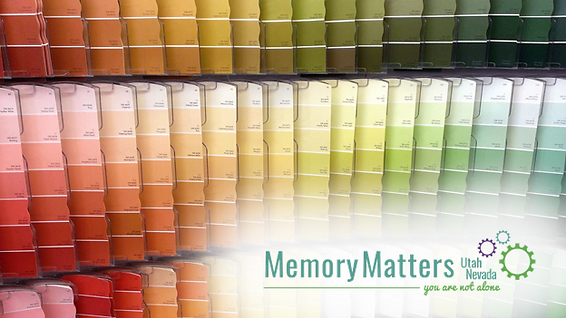The use of different colors, particularly those that contrast, has been proven to make life a little easier for Alzheimer’s and dementia patients.
Alzheimer’s and other forms of dementia can turn the golden years into a daily struggle. The Alzheimer’s Association reports that every 67 seconds, someone is diagnosed with the disease. Today there are over five million people living with Alzheimer’s — and that doesn’t take into account all of the millions more who suffer from dementia and other forms of memory loss.
But even as these medical conditions take a toll on individuals and their families, there remains a deep desire to stay home as we get older. Aging in place has become much more than a buzzword; it is now a way of life that has driven many families to plan their homes around the desire to stay in their comfortable, beloved space for as long as possible. In fact, the AARP reports that 87 percent of all those aged 65 and older want to spend their golden years in their own homes.
As more individuals turn to universal design to make their homes more accessible, one vitally important component is often overlooked: color. When it comes to memory care, homeowners can take a tip from assisted living facilities and use color to create a much more pleasant and productive atmosphere for those who suffer from dementia or Alzheimer’s.
How Color Can Help With Memory Care
Walk into any assisted living facility, especially those dedicated to helping patients with memory issues, and you will immediately see the inviting, warm colors that are meant to calm and soothe. But color does much more than make you feel welcome. Susan DiMotta, NCIDQ, IIDA, LEED AP of Perkins Eastman, says that color helps the residents.
“Overly vibrant colors and an abundance of many colors can be agitating for these residents,” she said. “This is not to say that everything has to be beige and bland. The use of small scale patterns and textures are used to enhance the color selections. High contrast color values should be avoided for floor surfaces, since a very dark color in a light field can be perceived as a hole or an object to step over, increasing the potential for falls.”
Homeowners who want to recreate the wayfinding system often utilized in assisted living facilities can do so in their own homes — it just takes a little planning. “The strategic use of colors at entries and intersections that require a direction decision can assist with wayfinding and orientation. A flooring feature of another color from the field, close in value, can guide someone who is unsure of the way to the bathroom or the entryway to their bedroom. Painting the room’s exit door a different color than other doors in the room can reduce anxiety.”
Remember That Light Matters
Read a bit about aging in place and you will quickly come across the importance of proper lighting in a room. When that lighting works in harmony with color, your home can be even safer. Proper illumination isn’t just about making the house brighter — it’s also about creating a color scheme that works for our aging eyes.
“As the eyes age and the lenses start to yellow, it is easier to see warmer colors rather than cool blues and grays,” DiMotta said. “If you have ever taken the color blind tests of the hidden numbers in dots in color mixes, you will find it more difficult to identify the number in the cool colors as opposed to the warm yellows, golds and oranges. Seniors also like brighter colors more than very subdued and monochromatic color schemes.”
Just choosing the right colors is the first step; lighting them up is the second. That’s because in addition to the yellowing of the lenses of the eyes, the pupils don’t open as much as they used to, and that means more light is needed. Something as simple as the proper light bulb in a lamp can work wonders.
“It is important to remember that for color to be recognizable there must be enough light,” DiMotta said. “Higher light levels provided with lamping of a high CRI (color rendition index) are necessary in order to accurately perceive color. We prefer to use a Kelvin temperature of 3000 or 3500; 2700 is the usual temperature for incandescent lamps, which can be very yellow resulting in colors that look muddy, while 4000 is cooler and has a blue cast in tone. We find the 3000 range is the ideal temperature to see color in the most pleasant way, particularly for skin tone.”
Take A Look At The Overall Picture
What can you do with color right now to make your home more secure for those who are living with dementia or Alzheimer’s? Begin by planning out their personal areas. Painting their door a color that is meant only for them, and using certain colors to lead to key areas of the house can help. As texture can often help bring back memories and create familiar patterns, you might even try textured paint along a hallway — someone could trail their fingers along the wall to help them ‘see’ where they are going.
While color and lighting can make a huge difference for aging in place, keep in mind that it takes more than just the right shade to create a very safe environment. For memory care, incorporate the proper colors but rely on other practical points as well. “Color has to be part of a complete system for wayfinding, including the use of signs, photographs, and the caregiver, which studies have determined to be the most effective way to provide assistance,” DiMotta pointed out. “Color alone does not accomplish this goal.”
If you would like more information about Memory Matters programs and services call us at: 435-319-0407 or email us at memorymattersutah@gmail.com

